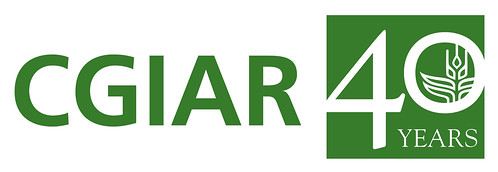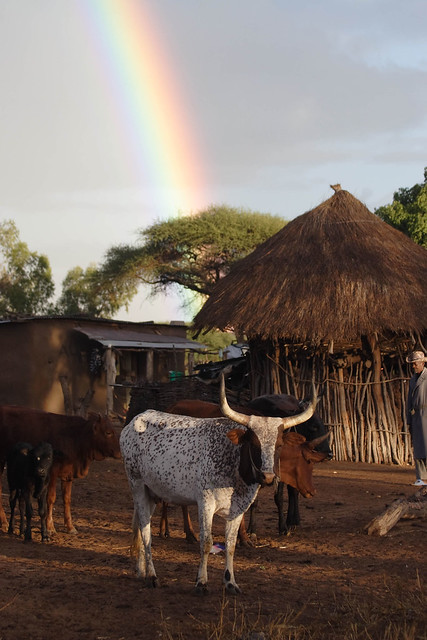Shiferaw Teklemariam, Ethiopian Minister of Federal Affairs, opened a ‘Future of Pastoralism in Africa’ Conference yesterday (21 March 2011), which is organized by Tufts University and Future Agricultures Consortium and being held on the Addis Ababa, Ethiopia, campus of the International Livestock Research Institute (ILRI). The Minister’s talk was followed by that of Abebe Haile Gabriel, director of the African Union Department of Rural Economy and Agriculture who reminded his audience that ‘Pastoralism is nothing new but is continually forgotten.’
Ian Scoones, of the Future Agricultures Consortium and the Institute of Development Studies at Sussex University, then set the scene for the conference with remarks such as the following. ‘There is a moment now, with renewed interest in pastoralism in the Africa Union, regional bodies and national governments, for evidence-based research to inform policy. Even a decade ago, we would have been urging governments and the Africa Union to give pastoralism attention. They are now taking pastoralism seriously, as a driver of growth. . . . This meeting comes in a long lineage of meetings discussing the future of pastoralism in Africa. (A meeting in 1951 in Niamey was an early one.) But recently, there has been massive change and dynamism in this continent’s pastoral areas. . . . Popular reports on pastoralism are dominated by crisis narratives. While the popular discourse continues with doom and gloom scenarios, we see dynamic change with growth—as in the livestock trade booms in the borderlands—with both winners and losers. . . .
‘The research on pastoralism in Africa has a rich tradition. Among the more classic works are the optimism displayed in the 1960s and 1970s about the transformation of pastoralism; 1980s work done by ILRI’s predecessor, ILCA (International Livestock Centre for Africa), on the Borana pastoralists of Ethiopia; the 1990s’ focus on land tenure issues and ‘disequilibrium’ in rangelands; the attention given by CRSP (Collaborative Research Support Program) and others to pastoralist poverty and livelihoods; recent emphasis on the marketing and commercialization of pastoralist livestock products; and today’s attention to the impacts of climate change, conflict and insecurity on pastoral communities. . . .
‘We want in this workshop to build on this huge body of work, to reflect on it, and to judge how robust were those findings. We want to know what new insights are suggested by today’s research and what they suggest for policymaking. . . . We want to offer possible scenarios for pastoralist areas and to do so we want to try out a simple approach. This simplistic diagram categorizes pastoralists according to whether their access to markets and resources is good or poor, as in the following.
- Where pastoralist access to both markets and resources is good, there is potential for commercialization and export trade.
- Where pastoralist access to both markets and resources is poor, communities should seek alternative livelihood strategies and ways to exit pastoralism.
- Where pastoralist access to resources is good but to markets is poor, traditional mobile pastoralism should continue to dominate.
- And where pastoralist access to markets is good but to resources is poor, ways of diversifying livelihoods and adding value to livestock products is needed.’
Impacts of climate change on pastoralist communities
Several ILRI scientists participated in a session after lunch on the impacts of climate change on pastoralism. These included Polly Ericksen, who made a presentation, Shirley Tarawali, Jan de Leeuw, Andrew Mude and David Nkedianye. The latter, a Maasai who worked with ILRI while doing his doctoral research, also made a presentation.
Polly Ericksen, of ILRI, reminded her audience that managing climate variability and climate risk is at the very heart of pastoralism. The consequences and implications of climate change are therefore of paramount importance to pastoral livelihoods, production systems and landscapes. The paper developed by Ericksen—along with her ILRI colleagues Phil Thornton, Augustine Ayantunde, Mario Herrero, Mohamed Said and Jan de Leeuw—explores what we do and do not know about how climate change will unfold in pastoral areas of sub-Saharan Africa. And it stresses the importance of successful strategies for adapting to climate change at local as well as higher governance levels for the future of pastoralism.
Among other remarks from Ericksen were the following. ‘Pastoralists of course manage well the considerable changes in climate that they experience. Pastoralism is a supreme adaption to managing climatic variability. . . . The 2009 drought in Kenya killed up to 80% of the livestock kept by the country’s pastoralists. . . . Many crop farmers in Africa’s drying regions will start to incorporate more livestock, a trend that has been occurring in West Africa for the last 2 to 3 decades. . . . New research shows that, contrary to IPCC estimates, the Kenya highlands have been getting drier and are likely to continue to dry. There is fundamental uncertainty regarding the impacts of climate change—not least because we don’t even know how we humans will manage ourselves in the face of climate change.’
Remarks by Gufu Oba, of the Norwegian University of Life Sciences: ‘The variability of Africa’s drylands—season to season, year to year, place to place—makes nonsense of theories of “carrying capacity”. . . . Pastoralists do not run away from risks: they face them straight on. And communities and individuals differ greatly in how they cope with threats. . . . Pastoralism will be less mobile in future, but pastoralism will survive: herders will not exchange their lava rocks and other dryland features for anything.’
David Nkedianye, heading a non-governmental organization called ‘Reto-o-Reto’ (‘I help you, you help me’ in the Maa language) in Kenya’s Kitengela rangeland region, in his presentation said that lack of land tenure and land use policies, increasing demographic pressure, growing rural-to-urban migration, insecurity and lack of a cross-bornder migration framework are some of the key issues to be tackled soon if pastoralism is to survive into the future. Lessons from southern Kenya indicate that trends in land fragmentation and radical policies on land use have been difficult to change. Going by the going rates and direction, pastoralism is headed for harder times in the future. Nkedianye also said the following: ‘Lands in Kajiado are being privatized and fragmented much faster than those in Narok, with huge land speculation going on. . . . In Kajiado in the great drought of 2008/9, only herders able to move to the wetter north were able to save some of their stock. . . .
‘The irony is that as we open up more and more rangelands by providing roads and other basic infrastructure, more people will move in, which will reduce pastoral mobility even more. . . . We need to be consistent and relentless in our policy messages and to promote our women and our adolescents. Two things that are making a big difference in my part of Kenyan Maasailand [Kajiado] are education and Christianity. . . . Pastoralists have “exited” pastoral livelihoods since time immemorial but the present inability of many herders who have lost their animals to go back into pastoral ways of life once they have rebuilt their herds is perhaps new. . . . We have to come to terms with longer term pressures, particularly demographic. . . . Cell phones have changed pastoralism a lot. But more important are that rich people have richer connections.’
Terry McCabe, of the University of Colorado, reminded the group that the biggest shock to East Africa’s pastoralists in more than one hundred years was not climate change but disease—specifically the great rinderpest plague of the end of the 19th and beginning of 20th centuries, which killed whole populations of wild and domesticated animals and led to the starvation of many herding communities.’
The Future Agricultures Consortium and the Feinstein International Center at Tufts University jointly organized this conference to assess ongoing change and innovation in Africa’s pastoral areas. Researchers, policymakers, field practitioners and donor representatives at this conference are assessing the present and future challenges to African pastoralism to define new research and policy agendas.
View the presentation of Polly Ericksen
For more information, visit the Future Agricultures Consortium website conference page or blog and revisit this ILRI News blog.




 Livestock researchers at ILRI believe that rather than trying to rid the world of livestock, it’s preferable to find ways to farm animals more efficiently, profitably and sustainably.
Livestock researchers at ILRI believe that rather than trying to rid the world of livestock, it’s preferable to find ways to farm animals more efficiently, profitably and sustainably.

